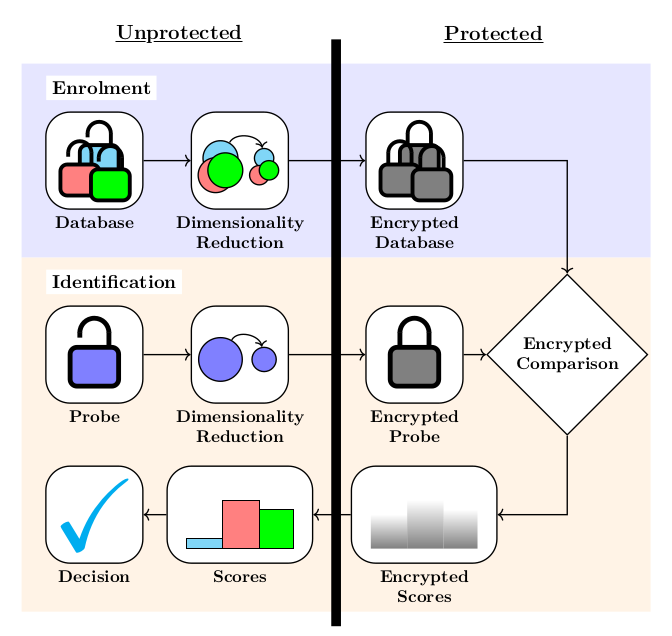Jonas Olafsson defended his Master Thesis on Efficient Facial Identification using Homomorphically Encrypted Templates

Biometric recognition systems are part of our daily lives. They provide a fast and convenient method of authentication as an alternative to the classical knowledge- or token based approaches. As general technological use increases, attacks tend to do as well, and unlike passwords, a person’s biometric characteristics cannot be revoked or changed if a system is compromised. Hence, biometric systems are required to ensure privacy, but many classical approaches would make comparisons hard to impossible as biometric data is inherently noisy. One approach towards protection is to use Homomorphic Encryption (HE), where it is possible to perform computations on encrypted data, e.g. an encrypted biometric comparison. While this solves the privacy issue, it introduces a new one: encrypted operations are relatively slow. Another challenge is the trap-door problem behind these HE schemes, where many schemes today build on the Ring-Learning With Errors (R-LWE) problem. HE with R-LWE is relatively new, so not many standards exist, and this may compromise the security of the schemes if bad parameters are chosen. It may be tempting to choose such bad parameters, as it causes a trivial speed-up of the homomorphic operations. Instead, to perform an efficient authentication, different methods exist called workload reductions methods, which aim at reducing the number of computational operations necessary to perform the same task. The workload reduction method in this thesis attempts to find a more compact format of biometric templates by using dimensionality reduction. It is found that biometric templates contain abundant information and can be heavily compressed with minor loss in biometric identification performance. A method to efficiently encrypt the templates is developed, leading to a quadratic workload reduction as a function of smaller template size in an identification scenario, while preserving the security parameters.
